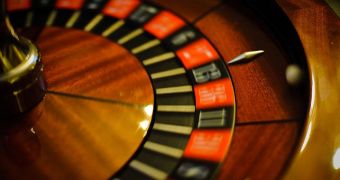There are many types of gamblers out there, and each of them makes its decisions based on certain patterns. In a new study, experts analyzed their brains, and were able to find the regions that are involved in underlying all the different types of decision-making behaviors.
This work is very important for understanding gambling and the addiction some people feel to it. For the purpose of the new study, experts looked exclusively at the two most important decision-making behaviors gamblers tend to display.
The first of them is called reinforcement learning, and is applied by people who, for example, always play the same numbers at a roulette table. They do so because the numbers were “lucky” in the past, and they so no reason to stop using them now.
The second type of behavior is called the gambler's fallacy, and it is represented by the erroneous belief that a certain result is “due” because it did not show up in a while. This is one of the most logically-flawed approaches, since statistical studies clearly disprove the concept of “due” in gambling.
Working together with Irish colleagues from the Trinity College Dublin, experts at the California Institute of Technology (Caltech), in Pasadena, were able to identify the area of the brain that is activated when people select between one of the two main types of behaviors.
Details of the new work appear in the April 27 issue of the esteemed Journal of Neuroscience. It is only a small part of a larger set of studies, meant to determine how brain mechanism and neural pathways influence the decisions we make in our daily lives.
“Through our study, we found a difference in activity in a region of the brain called the dorsal striatum depending on whether people were choosing according to reinforcement learning or the gambler's fallacy,” explains researcher John O'Doherty.
“This finding suggests that the dorsal striatum is particularly involved in driving reinforcement-learning behaviors,” the investigator adds. He is a Caltech professor of psychology and an adjunct professor of psychology at the Trinity College Dublin.
“For this particular study, we were interested in what part of the brain might play a role in controlling these strategies that drive behavior,” O'Doherty reveals. The expert conducted the new study alongside postdoctoral researcher Ryan Jessup.
The team analyzed 31 test subjects, who were asked to participated in four games of roulette. At the same time, they were hooked to an Magnetic Resonance Imaging (MRI) machine, which provided experts with an insight into their neural activation patterns.
“The dorsal striatum was more active in people who, at the time of choice, chose in accordance with reinforcement-learning principles compared to when they chose according to the gambler's fallacy,” Jessup explains.
“This suggests that the same region involved in learning is also used at the time of choice,” he concludes.

 14 DAY TRIAL //
14 DAY TRIAL //